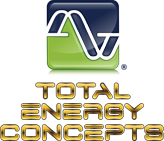Saving energy literally translates into dollars and cents for conscientious homeowners. Not only can homeowners save money on their electric bills, but they can also qualify for tax breaks for environmentally friendly equipment and improvements. Through energy optimization, any homeowner can maximize savings in five simple steps.
Replace major appliances with energy-efficient models. Energy-efficient appliances are usually more expensive up front. However, they quickly pay for themselves through energy savings—and recently introduced tax breaks for green home improvements. Although most homeowners think to upgrade their refrigerators, washers, and dryers, they often overlook the hot water heater. Yet this appliance usually accounts for at least 25% of residential electricity usage. Even older hot water heaters can be retrofitted with a device like the AirTap, which uses heat pump technology to reduce energy use by up to 70%, without sacrificing temperature or capacity.
Install efficient lighting throughout the house. From Compact Fluorescent Lamps to LED bulbs, the array of energy-efficient lighting options makes it possible to replace virtually every incandescent bulb in the house. While lighting accounts for approximately 60% of the average electric bill, traditional lightbulbs use only about 5% of the energy used to produce light. The other 95% escapes in the form of heat—which can even drive up cooling costs during the summer! Replacing these inefficient bulbs with their environmentally friendly counterparts reduces lighting energy costs by up to 80%.
Improve overall energy efficiency with electrical current optimization. Every electrical system runs on electrical current, measured in Amps. As energy is transferred throughout the home, much of it actually wasted; the average residential electrical efficiency registers at 85%. A power factor correction unit improves that efficiency rate. This device can be installed directly on the breaker box for year-round energy savings.
Protect equipment from electrical damage. Electricity is a vital part of daily life, but it can also be dangerous. Power surges may occur due to lightning strikes, downed power lines, or even routine electrical maintenance. A surge can severely damage electrical equipment, especially more delicate items like computers and televisions. To protect the whole house, homeowners can install a surge protector like the V-Blox House Surge Protection Unit. The device easily installs to the electrical panel.
Practice energy-efficient habits. Energy savings requires daily awareness of electricity usage. The right equipment creates an energy-efficient infrastructure. To complement that foundation, homeowners should practice responsible usage, such as turning off lights in empty rooms and unplugging unused phone chargers. Homeowners can also improve their savings by routinely checking insulation and weather stripping.
For comprehensive energy savings, homeowners can combine energy -saving equipment, techniques, and habits. This holistic energy optimization strategy significantly decreases homeowners’ electric bills and protects the environment.


